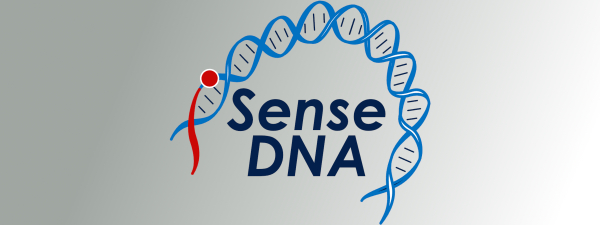Previously, we only had access to snapshots of the structure of the molecules, but we need to link the full structure of a molecule to its function. In this Project, from dynamic images it will be possible to trace the understanding of how molecules interact with each other in space, just as Michelangelo shaped the marble from his preliminary drawings to the definition of each muscle which, by vibrating, makes the observer perceive the harmony of each movement... In this project, coordinated by the Uppsala University (Sweden), the National Research Council of Italy (CNR) participates as a single research unit represented by the Institute of Biosciences and BioResources (IBBR) leaded by Prof Giuseppe Perugino and Dr. Anna Valenti, in collaboration with Dr. Lorenzo Avaldi and Dr. Paola Bolognesi from the Institute of Structure of Matter (ISM). iSenseDNA aims to develop a technology that links changes in the structure of a biomolecule to its function during complex dynamic processes in real-time. Today, there are techniques to study the function of a molecule during a biological process, and to study the detailed structure of molecules. But no one succeeds in connecting structure with function by a dynamic point of view. This hampers the prediction of structural changes needed, for example in the field of drug development and discovery. Computational and biotechnological methods will be combined for advanced optical analysis of biomolecules "in action". The project will develop a so-called nano-transducer, a DNA-based sensor that is sensitive to structural changes and allows real-time reading. "This multidisciplinary project establishes a synergy among different fields and technologies that has the potential to extract otherwise well-hidden information about complex processes, which will eventually contribute to advances in medical diagnostics and treatment" says the coordinators. The researchers involved in iSenseDNA come from universities (Uppsala, Umeå, and Padova universities), research centers (CNR, BIO, DESY, ESRF), and a company (OrganoTherapeutics, OT) across Europe (Sweden, Italy, Spain, Germany, Luxembourg, France). The project has a total budget of approximately 3 million euros and is financed by the European Innovation Council within the framework of the EIC pathfinder Open Call.
Acronym: iSenseDNA
Financing body: EU
Call: HORIZON-EIC-2021-PATHFINDEROPEN-01(EIC Pathfinder Open 2021)
Starting year: october 1 2022
End year: september 30 2026
Budget ISM (k€): 112.500
Role ISM: Unit
Referent ISM: Paola Bolognesi
Other ISM staff involved: Lorenzo Avaldi
Laboratory: Molecular Dyamics and Application (MDA)
Website: https://www.isensedna.eu
